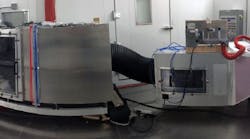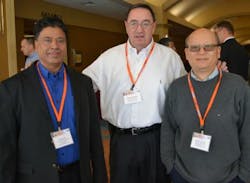ORLANDO, FLA. — How hot can the discussion get when the subject is refrigerants? While it's not the most exciting of topics, in today's economy and global environment, developments and decisions surrounding alternative refrigerants are exerting greater influence over the entire workings of the heating, air conditioning, and refrigeration industries.
That's why there was a full house of about 200 attendees at the Air-Conditioning, Heating and Refrigeration Institute's (AHRI's) Low-GWP AREP Phase II Conference, January 21, at the Rosen Centre Hotel in Orlando, Fla. The Rosen Centre serves as the host hotel for the 2016 AHR Exposition, set to kickoff on Sunday.
The conference marked the conclusion of a five-year, two-part refrigerant evaluation program.
AHRI President and CEO Steve Yurek explained the goals of the conference, in a program note to attendees:"In 2011, AHRI launched an industry-wide cooperative program to identify and evaluate promising alternative refrigerants for majorThis event brought together researchers on the leading edge of alternative refrigerant research. During a full day of presentations, they provided final reports on refrigerant performance that could serve as a springboard to approval.
Presentations were made by researchers from the following original equipment manufacturers: United Technologies-Carrier; Daikin/Goodman Manufacturing; Lennox Industries; Danfoss; WaterFurnace International; Daikin Applied; Bristol Compressors; Emerson Climate Technologies; Carlyle Compressors; Bitzer US; Embraco Europe Srl; Tecumseh Products Co.; Ingersoll-Rand; Zamil Central Air Conditioners; Manitowoc Ice, Inc.; and ASERCOM. Som Shrestha of the Oak Ridge National Laboratory delivered a presentation related to R410A an R22 alternatives in mini-split air conditioning systems.
Alternative refrigerants used in various studies included:
R-32
N-20Bb
DR-3b
DR-5A (R-454B)
ARM-20Bb
HPR2A
L-20Ab
DR-93b
R-290a
R-444B
R-290
DR-3
ARM-71Ab
R-32a
DR-55b
L41-1 (R446A)
L41-2 (R447A)
L41-2b; HPR-2Ab.
Refrigerants were tested in a variety of HVACR applications, including mini-split systems, split systems, water-cooled chillers, air-to-water heat pumps, water-to-air heat pumps, and rooftop air conditioning units, and more.
As important as the meeting and its information is to the development of alternative refrigerants, it's still just one step in the ongoing process of evaluation, verification and ultimate approval of alternative refrigerants.
"It's a difficult question to answer, 'when will these refrigerants reach the market?'," said Karim Amrane, Ph.D, senior vice president of regulatory and international policy for AHRI. "There are issues related to safety codes and standards that need to be modified to accommodate those standards. So, for contractors, nothing will happen within the next five years. By then, hopefully the codes would be amended and we will see more product on the market."
"They're going to face the challenges of all refrigerant transitions; they need to be knowledgeable about all the refrigerants that have already been tested, including the lubricants, which are a critical part of determining whether or not the refrigerant will live within the system. And, compressor reliability is certainly a big issue as well," said Keith Gifford, director of global marketing for Tecumseh.
"They also have to work within the limitations of existing federal regulations, such as the EPA SNAP program," Gifford said.
The AHRI Low-GWP AREP Conference illustrates the HVACR industry's commitment to finding viable refrigerant alternatives.
The entire library of this year's presentations can be found here:
AHRI Low GWP AREP Reports












